1. The geometry of a serious bike
First of all, you should ask yourself: what is the land Why am I going to pedal for a longer time? The answer will guide you when choosing the ideal geometry for your bike. Geometry is a crucial factor in any bike, as it conditions the comfort and behavior of your machine. It is particularly important in this Modality of Gravel, where geometries between brands and models usually vary substantially.It may interest you: What should you take into account when GRAND IN THE SERLL? Javier Bañón Izu, communicator and one of the great experts in the field tells us. You can visit here Javier's YouTube channel on Gravel and bicycle adventures.
Some bicycles are long and stable, so they will give you more confidence. Others are short and nervous, resulting more agile, but forcing a more skilled pilot. Some geometries get closer to the road bike and others tend more towards a bicycle of Cross country (XC), to an MTB. The choice of the correct geometry will depend on the land through which you circulate. If most of your routes run through cartiles and simple tracks, a geometry similar to that of a road bike has all the way. If you like to lose yourself by trails and roads, perhaps you should look for a geometry closer to the mountain bike. But don't cheat or get carried away by fashion. In principle, grave bikes cover precisely that space that does not belong to the world of the road or the world of trialeras. At least, with that spirit they landed in the market.
In their origin, the bikes of grave were born to cover a space that does not belong to the world of the road or to the world of trialeras.In general terms, the geometry of a serious bike is less demanding (and less aerodynamics) than that of a road bike, and a little more aggressive compared to an XC bike. All brands have numerical tables that inform you of the measures and angles of the painting. Without going into great details, one of the most decisive values is the call Trail. To understand it well, the Trail It would be the distance between the projection of the steering tube of the table, with the same angle, and the vertical projection of the front wheel axle. At more distance, a more launched position, with what you earn in stability, but you lose in reactivity. The bicycle is a little more lazy. [Captation id = "Attachment_7166" Align = "Alignnone" Width = "900"]
 In red, the trail.[/caption]
For simplifying: the greater the Trail, the sensations on the bike are closer to those of a mountain bike. To get an idea, most current mountain bikes move Between 80 and 100 mm. The road bike, Between 55 and 61 mm.
Certainly, the Trail It is not the only measure that determines geometry, but it is a good indicator for those who do not master these issues.
In red, the trail.[/caption]
For simplifying: the greater the Trail, the sensations on the bike are closer to those of a mountain bike. To get an idea, most current mountain bikes move Between 80 and 100 mm. The road bike, Between 55 and 61 mm.
Certainly, the Trail It is not the only measure that determines geometry, but it is a good indicator for those who do not master these issues.
2. The wheels and covered on a serious bicycle
If the wheels are determinants In any type of bicycle, in a serious bike they are even more so if possible. The choice of your tires must adapt to the ground for which you plan to roll for a longer time. But there are other very important factors that you must contemplate: your pedaling style, your ability, your marching speed ... For example: it is not the same fly at 30 km/h on roads full of loose stone, than to take the same walk. In the first case, a relatively narrow wheel can be perfect. But that same wheel for an inexperienced cyclist can be a headache and continuous source of punctures. Depends.It may interest you: To what extent is the introduction of thousands of innovations in Grailer Marketing product What about a real need? This is Javier Bañón's opinion.
Well, are you already clear what your style is? Well, let's go with the tires. The tire offer is huge. But you should always look at least in two issues: the wheel size and the roof. If you opt for gravel routes or compact land, a 700c wheel (the standard used by road bikes) and a tire of 32-40 mm Width should be more than enough. If yours is speed OFF-ROAD And you ride 30 mm, for example, you could go really fast and enjoy sensations similar to those provided by the road cycling. Translating: In this case, we would be talking about a road wheel with a thick, but harmonious cover. Let's say it would be the assembly of a grave of manual, of those that appear in the ads. But in wheel sizes there are more options. Especially, if you want to put your bicycle serrated to the limit. If yours are the roads and move on the border of the Grave and the MTB, you could mount a smaller wheel size. We would go to a 650b wheel. Does it sound to you?
If yours are the roads and move on the border of the Grave and the MTB, you could mount a smaller wheel sizeThis format allows more distance between tire and painting, so in that space you can mount more bulky tires, similar to those of a mountain bike. That higher volume allows you to roll at much lower pressures. In fact, this 650b format would be similar to that of a 27.5 -inch mountain wheel. It is understood? A smaller wheel will always be More reactive, further Mousetrap. You may ask yourself: Is there 700c bikes that support mountain covers? Yes, there are some that have very large wheel steps, but it is not the norm and we would be mixing concepts. With which, make sure your painting tolerates that type of wheels. If you have doubts, you can always acquire Two different wheel games: one of 700c and another of 650b. Crazy? It will always be cheaper than buying two bicycles.
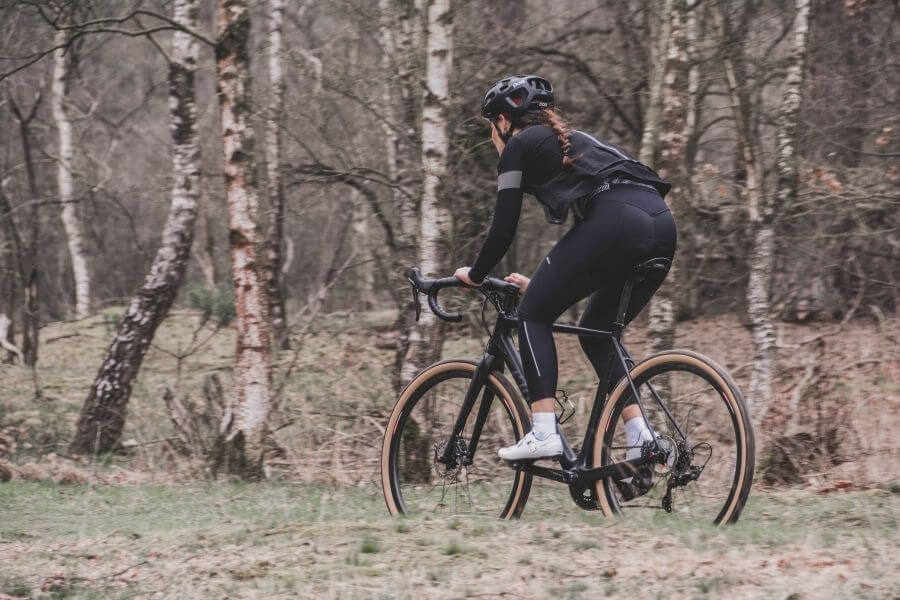 In summary.
If your routes are closer to the road than of the trialeras, with a wheel step that Tolere up to 40 mm You will be left over. It will be enough for almost all your adventures. Do you want more adrenaline for broken terrain? Well, look for at least 45 mm. A wider wheel allows lower inflation pressures and roll with more comfort, as if you had a small shock absorber.
And is that the pressure of the tires In a serious bike is another key aspect. Normally, your bike will be rigid (without damping) and it will be the wheels that help you absorb the irregularities of the terrain. A lower or greater inflation pressure can make the difference between a soft rolling and a punishment on two wheels.
In summary.
If your routes are closer to the road than of the trialeras, with a wheel step that Tolere up to 40 mm You will be left over. It will be enough for almost all your adventures. Do you want more adrenaline for broken terrain? Well, look for at least 45 mm. A wider wheel allows lower inflation pressures and roll with more comfort, as if you had a small shock absorber.
And is that the pressure of the tires In a serious bike is another key aspect. Normally, your bike will be rigid (without damping) and it will be the wheels that help you absorb the irregularities of the terrain. A lower or greater inflation pressure can make the difference between a soft rolling and a punishment on two wheels.
The higher the inflation pressure of your serious bike, the more your body will suffer the irregularities of the terrain.And what are the ideal pressures for your serious bicycle? Well, it depends too. The best decision is to stick to The manufacturer's recommendation. On the side of your covers you will find the minimum and maximum recommended pressures. The reasonable thing is that you stay in these parameters. But there is no fixed rule. For the same type of cover, the minimum pressure could range From 2.5 bar to under 1.0 bar. It depends on the ball (width) that your wheels have, whether they ride a camera or TUBELESS, of the weight of the bi-cyclist ensemble, etc ...
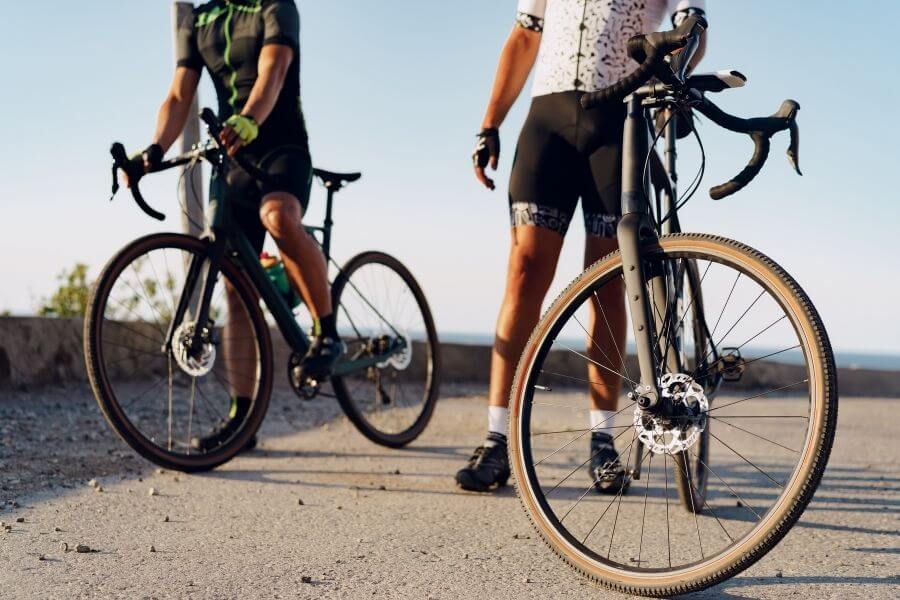 What we advise you, of course, is that Do not hurry the maximum pressure, since you will suffer to the smallest of the potholes and your route will become torture.
By orientative: for covers of 40 mm (very common by bikes of serious), a pressure Around 2.0 bar (Something else behind) can be suitable for shooting on any track, paths in acceptable state, and even well -foled paths.
Finally, make sure your wheels are prepared to mount covered with TUBELESS. That is, you can use them without a camera and with a sealing liquid. It is the most effective anti -nching method. If you try it, you will not want to return to the air chamber. We guarantee it.
What we advise you, of course, is that Do not hurry the maximum pressure, since you will suffer to the smallest of the potholes and your route will become torture.
By orientative: for covers of 40 mm (very common by bikes of serious), a pressure Around 2.0 bar (Something else behind) can be suitable for shooting on any track, paths in acceptable state, and even well -foled paths.
Finally, make sure your wheels are prepared to mount covered with TUBELESS. That is, you can use them without a camera and with a sealing liquid. It is the most effective anti -nching method. If you try it, you will not want to return to the air chamber. We guarantee it.
3. Transmission in a serious bike: one or two dishes?
We are already clear about the theme of the wheels, correct? Well, let's choose now The ideal transmission for your serious bike. If you are more asphalt and gravel tracks, and you run from infernal slopes, a conventional road group It may be the option to have an account. Especially, if you come from the world of wheels Skinny. Even the groups most focused on beginner cyclists (let's put a Shimano Claris, either SRAM APEX, for example) will comply with dignity. In these cases, the option of double dish it would be ideal. Because? Because it allows you a wide variety of multiplications, or what is the same: many marches with a minimum leap between them. This favors maintaining constant cadences and roll kilometers and kilometers. Sensations similar to those of road circular, but with a point OFF-ROAD Add some sauce to your routes.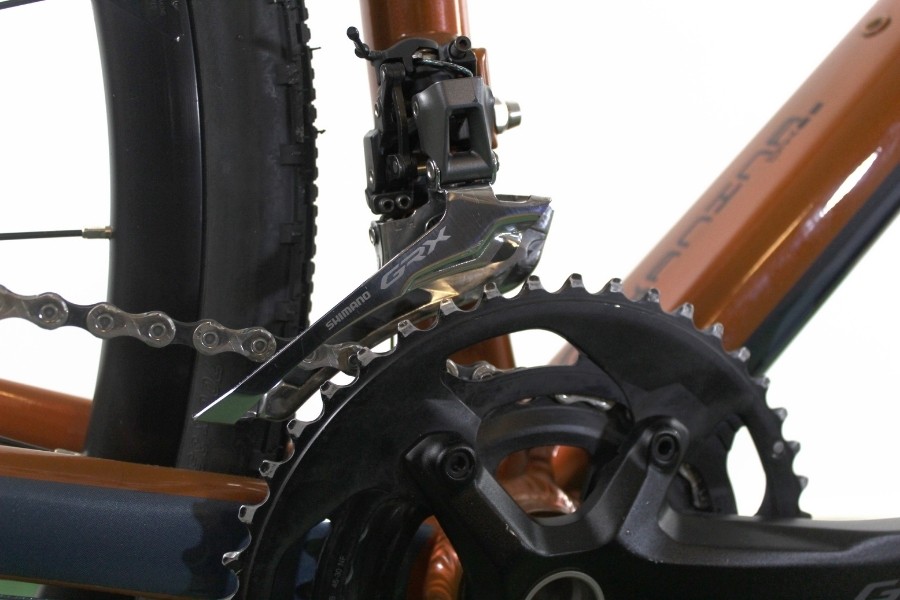 If you opt for this option, we recommend that you mount a Compact (Small 34 or 36 teeth dish) in combination with a 32 -teeth cassette. In this way, you will have room to face up with good cadence.
If your intention is to venture through much more broken terrain, the monopath It can be a more appropriate option. For many reasons. To start, it has less technical complexity, so maintenance is lower; The diversion and its components disappear.
On the other hand, let's recognize that it is a gallimatisms to change the dish continuously when facing continuous rises and descents. When there are many rhythm changes, a single dish is the ideal option.
If you opt for this option, we recommend that you mount a Compact (Small 34 or 36 teeth dish) in combination with a 32 -teeth cassette. In this way, you will have room to face up with good cadence.
If your intention is to venture through much more broken terrain, the monopath It can be a more appropriate option. For many reasons. To start, it has less technical complexity, so maintenance is lower; The diversion and its components disappear.
On the other hand, let's recognize that it is a gallimatisms to change the dish continuously when facing continuous rises and descents. When there are many rhythm changes, a single dish is the ideal option.
Grave -search bicycles usually offer some more rigidity in the pedalier axis.Monoplat transmissions offer the same gear range, even more, that the models designed for road bike; That is, the difference between the small pinion (10 teeth, for example) and the big one is usually much greater. Consequently, the jump between marches, by having less combinations, it is more abrupt. An added inconvenience that the chain can take slack more quickly, since it works crusade For longer. But with a time change, enough. Remember that a worn chain tends to slip on the gears and getting them on easily. This would force you to a more complex transmission change ... and expensive. Great manufacturers have already offered Specific assemblies for serious bike. If you have investigated a little, they will sound Shimano Grx, SRAM XPR, and even CAMPAGNOLO EKAR. [Captation id = "Attachment_7164" Align = "Alignnone" Width = "900"]
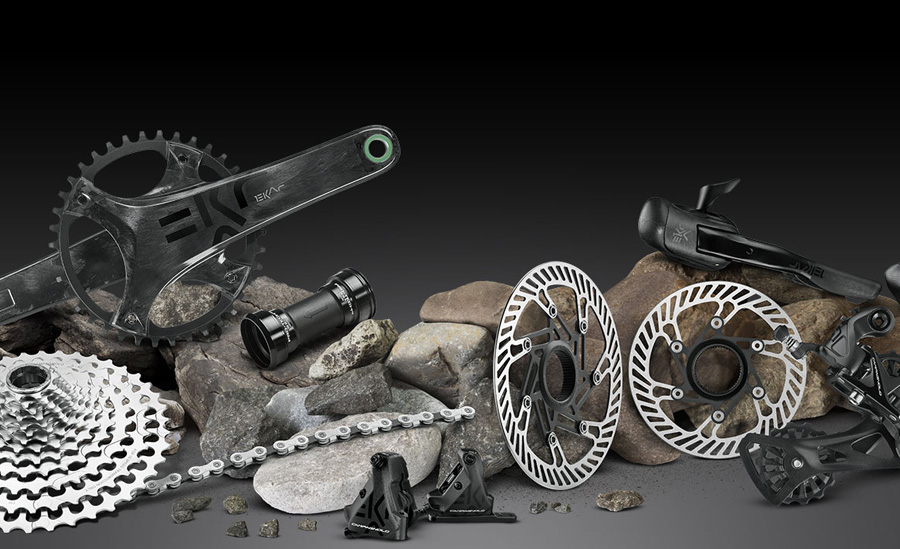 Ekar Group, the specific Campagnolo for Gravel. Image: Campagnolo.[/caption]
As for gear range, you have plenty of assemblies to face any land: the most steep to the most rolling. For example: with the Campagnolo Elkar group you could mount a 38 to 44 teeth dish, with a 13 -speed cassette between 9 and 42 teeth.
[IRP Posts = "4367" Name = "Specific change groups for grave, which is the best?"]
We cannot end this issue of transmission without addressing a key topic: Mechanical change or electronic change?
Margin prices, the reality is that the electronic change has also reached the Grave to stay. If you can afford it, is the ideal option: A comfortable, robust and reliable solution. Of course, do not forget to periodically recharge the batteries. If it is Shimano Di2, you just need to plug; For SRAM ETAP, the battery is loaded separately with a charger.
Ekar Group, the specific Campagnolo for Gravel. Image: Campagnolo.[/caption]
As for gear range, you have plenty of assemblies to face any land: the most steep to the most rolling. For example: with the Campagnolo Elkar group you could mount a 38 to 44 teeth dish, with a 13 -speed cassette between 9 and 42 teeth.
[IRP Posts = "4367" Name = "Specific change groups for grave, which is the best?"]
We cannot end this issue of transmission without addressing a key topic: Mechanical change or electronic change?
Margin prices, the reality is that the electronic change has also reached the Grave to stay. If you can afford it, is the ideal option: A comfortable, robust and reliable solution. Of course, do not forget to periodically recharge the batteries. If it is Shimano Di2, you just need to plug; For SRAM ETAP, the battery is loaded separately with a charger.
4. The box in a serious bike: aluminum or carbon?
No. We do not forget about Table material of your serious bicycle. But it is true that it is not as decisive as in other cycling modalities. Let's say the Grance is more of adventure and enjoy, and less competition. At least, a priori. If he carbon It is perfect, if you want to win the Tour of France and save a grams, but we imagine that it is not your case. It is difficult to perceive its virtues in terms of rigidity and weight when wheel with roads and on 40 mm wheels. This does not mean that we do not recommend it; On the contrary, it is that every euro of your purchase is well invested.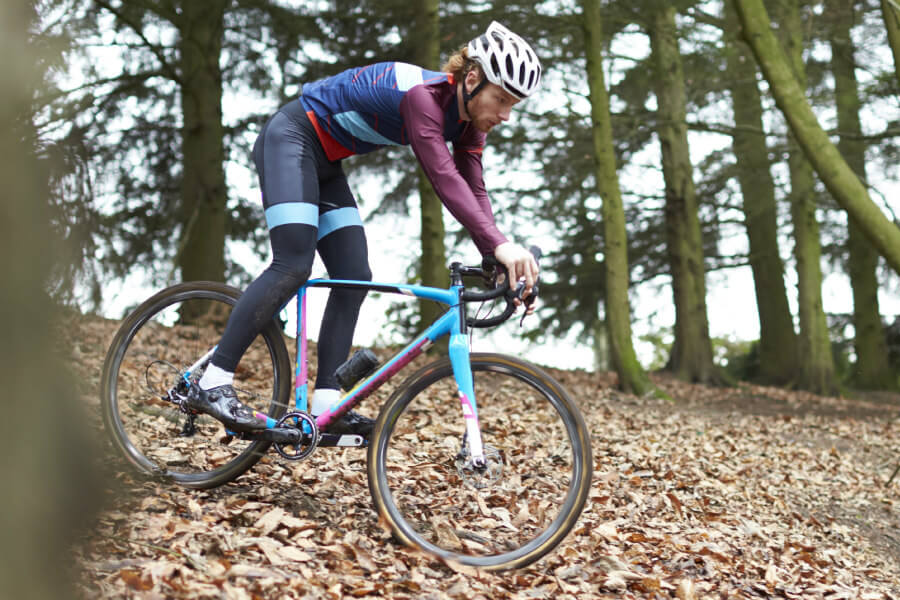 To start in this Serla, a Aluminum box, in combination with a Carbon fork that absorbs the bumps well, it can be the most balanced option in terms of price-re-re-re-.
In recent years, aluminum technology has evolved a lot, both aesthetically and in benefits. In addition to saving money, you will suffer less when your bike begins to show blows and brands for use.
Also clear that a good current aluminum picture will be preferable to a carbon range carbon or with many years of age.
To start in this Serla, a Aluminum box, in combination with a Carbon fork that absorbs the bumps well, it can be the most balanced option in terms of price-re-re-re-.
In recent years, aluminum technology has evolved a lot, both aesthetically and in benefits. In addition to saving money, you will suffer less when your bike begins to show blows and brands for use.
Also clear that a good current aluminum picture will be preferable to a carbon range carbon or with many years of age.
5. Suspension, handlebars, brakes ... What else take into account when buying a serious bicycle?
In principle, grave bikes do not have that competitive vocation that characterizes the road bikes more pro. Therefore, factors such as weight and aerodynamics do not play such a relevant role. If you usually pedal for broken terrain, we advise you A specific serious handlebar. [Captation id = "Attachment_7205" Align = "Alignnone" Width = "900"] Serrl Comp Beacon's handlebar model of the Ritchey brand.[/caption]
They are open handlebars, with Flare: curved out in its lower part and with less fall (Drop). In this way, you can separate the arms more and lower the center of gravity, so you earn stability and control in technical terrain. It also allows you to relax the posture, since the handlebar is low as much as the road bikes more Aero.
Serrl Comp Beacon's handlebar model of the Ritchey brand.[/caption]
They are open handlebars, with Flare: curved out in its lower part and with less fall (Drop). In this way, you can separate the arms more and lower the center of gravity, so you earn stability and control in technical terrain. It also allows you to relax the posture, since the handlebar is low as much as the road bikes more Aero.
A specific serious handlebar will allow you greater control and a relaxed pedaling posture.As for the brakes, little debate: of disc and hydraulic. It is the norm, with at least 160 mm in diameter, and even 180 mm if your weight or technical demand forces you to a greater braking power. And finally, in recent times we have lived the bicycle landing of serious Mocking fork (even with double suspension). Models like the Canyon Grizl wave Cannondale Topston They have very representative models of this trend. It can make sense. But if you decide to enter this segment, you might ask yourself if your best option is not a mountain bike. [Captation id = "Attachment_7163" Align = "Alignnone" Width = "900"]
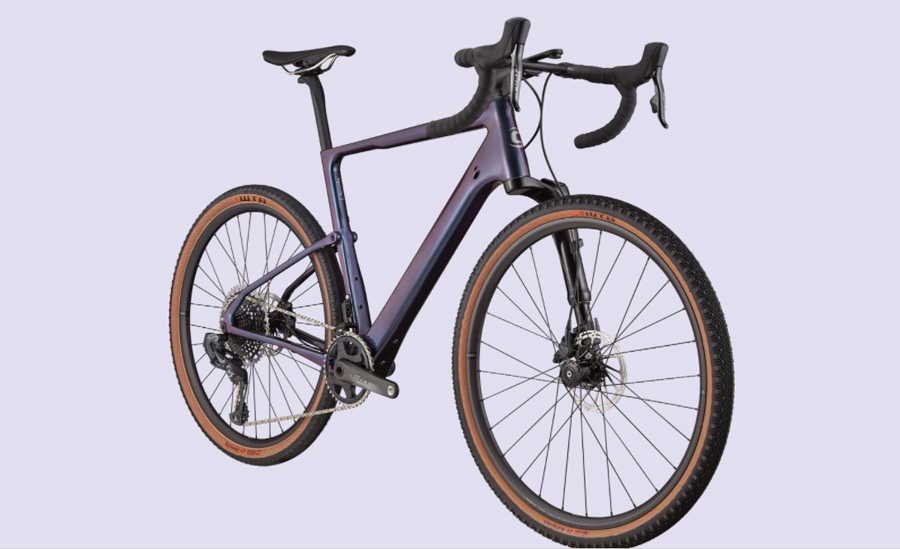 A Cannondale Topstone model, equipped with double suspension. Image: Cannondale[/caption]
[IRP Posts = "4127" Name = "Can I make a Mountain Bike route with a serious bicycle?"]
Well, and finally: it's not about choosing the perfect serious bicycle. It's about looking for adequate bicycle For your way of understanding cycling. If you do not, you will buy the wrong bicycle. In addition, that search is part of fun. Don't you think?
A Cannondale Topstone model, equipped with double suspension. Image: Cannondale[/caption]
[IRP Posts = "4127" Name = "Can I make a Mountain Bike route with a serious bicycle?"]
Well, and finally: it's not about choosing the perfect serious bicycle. It's about looking for adequate bicycle For your way of understanding cycling. If you do not, you will buy the wrong bicycle. In addition, that search is part of fun. Don't you think?
It may interest you: What will be The future of Grave in the short and medium term? We ask Javier Bañón Izu.












